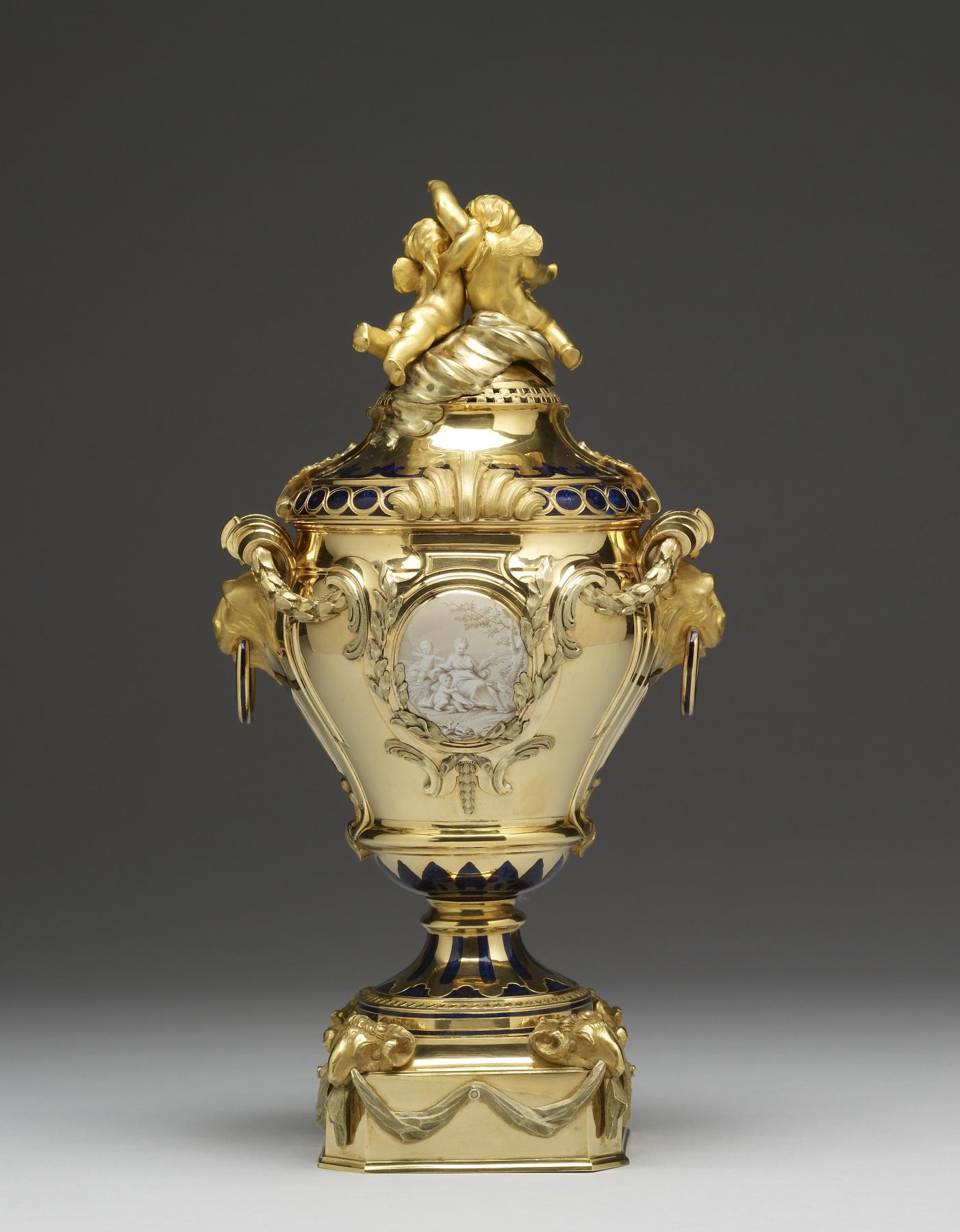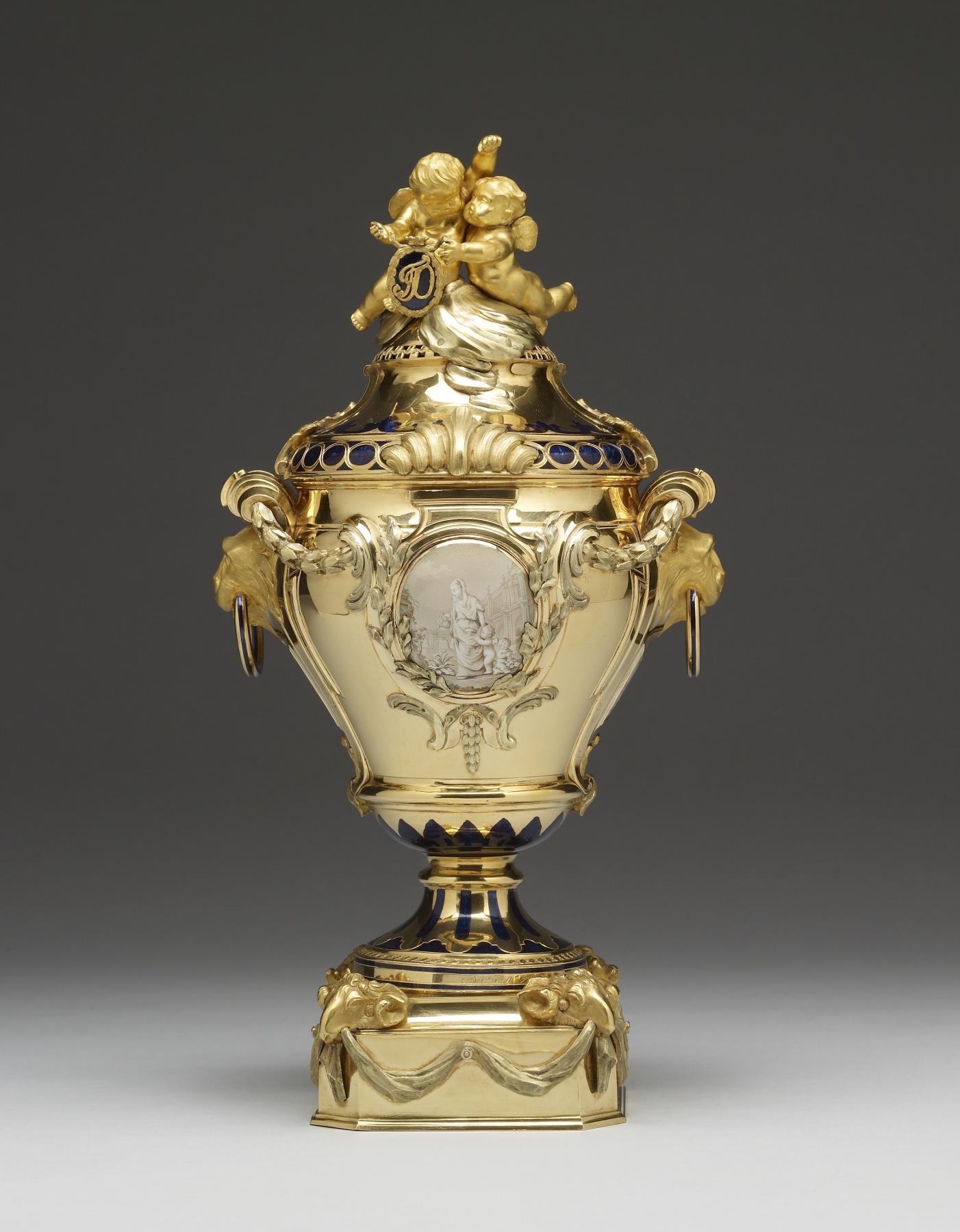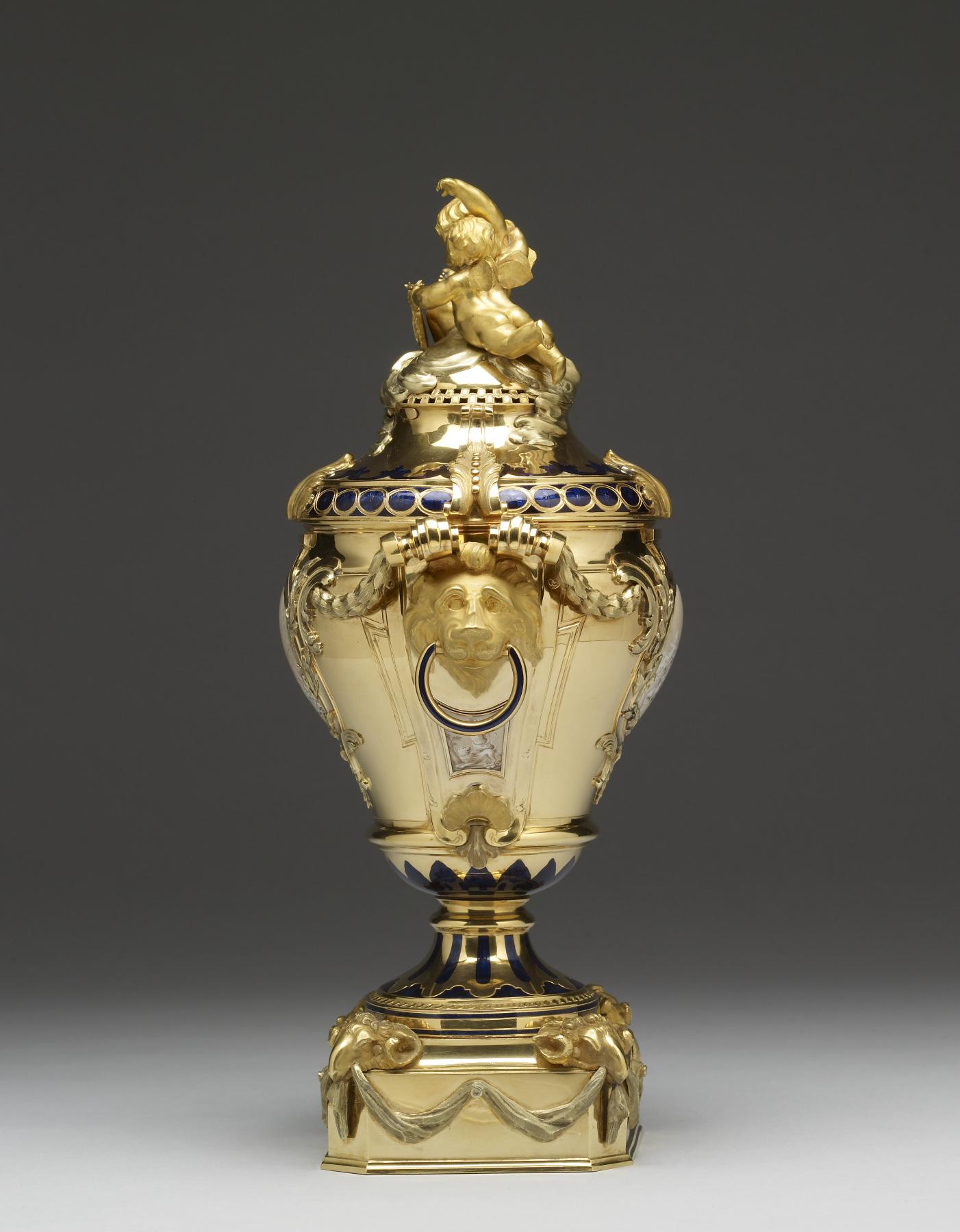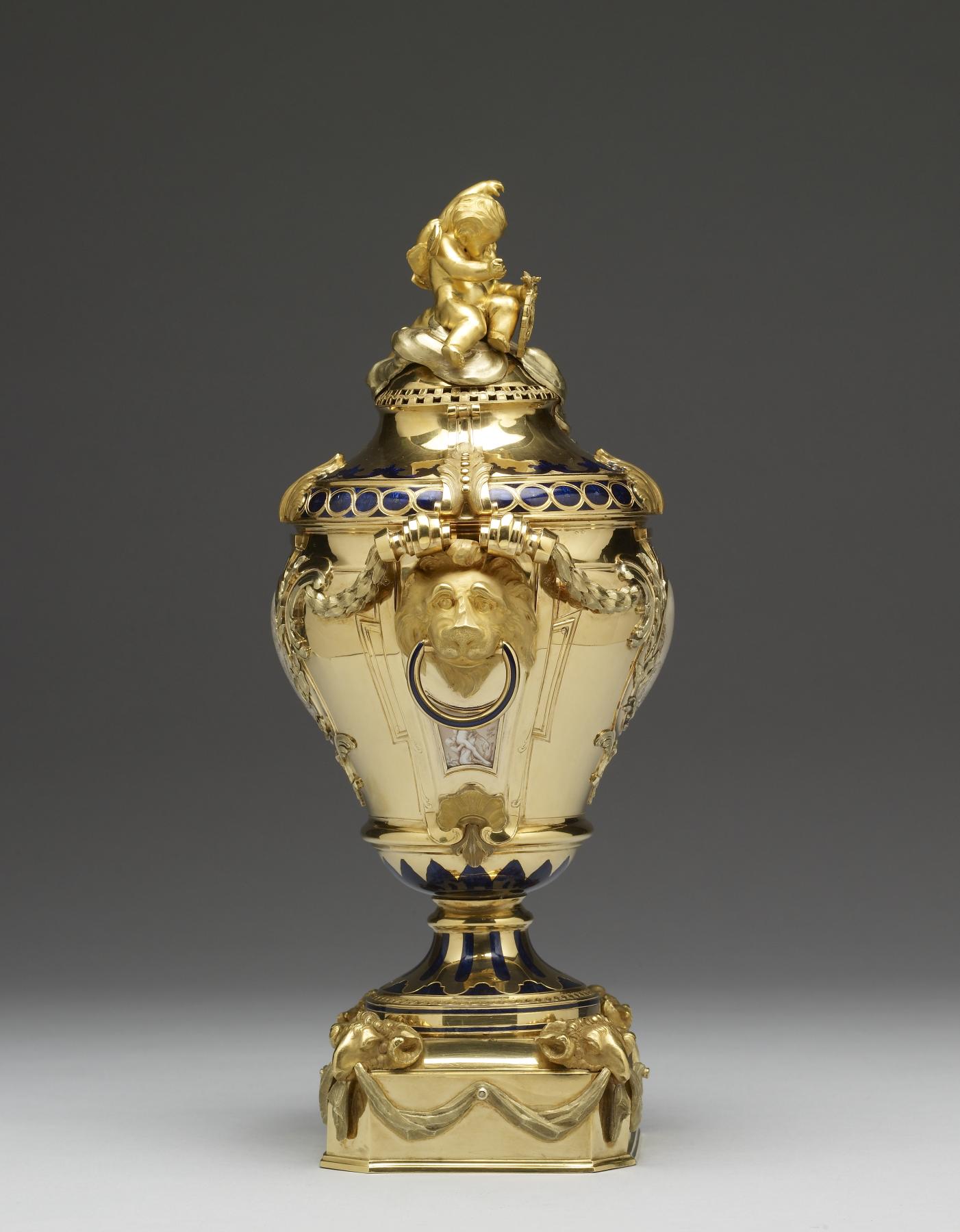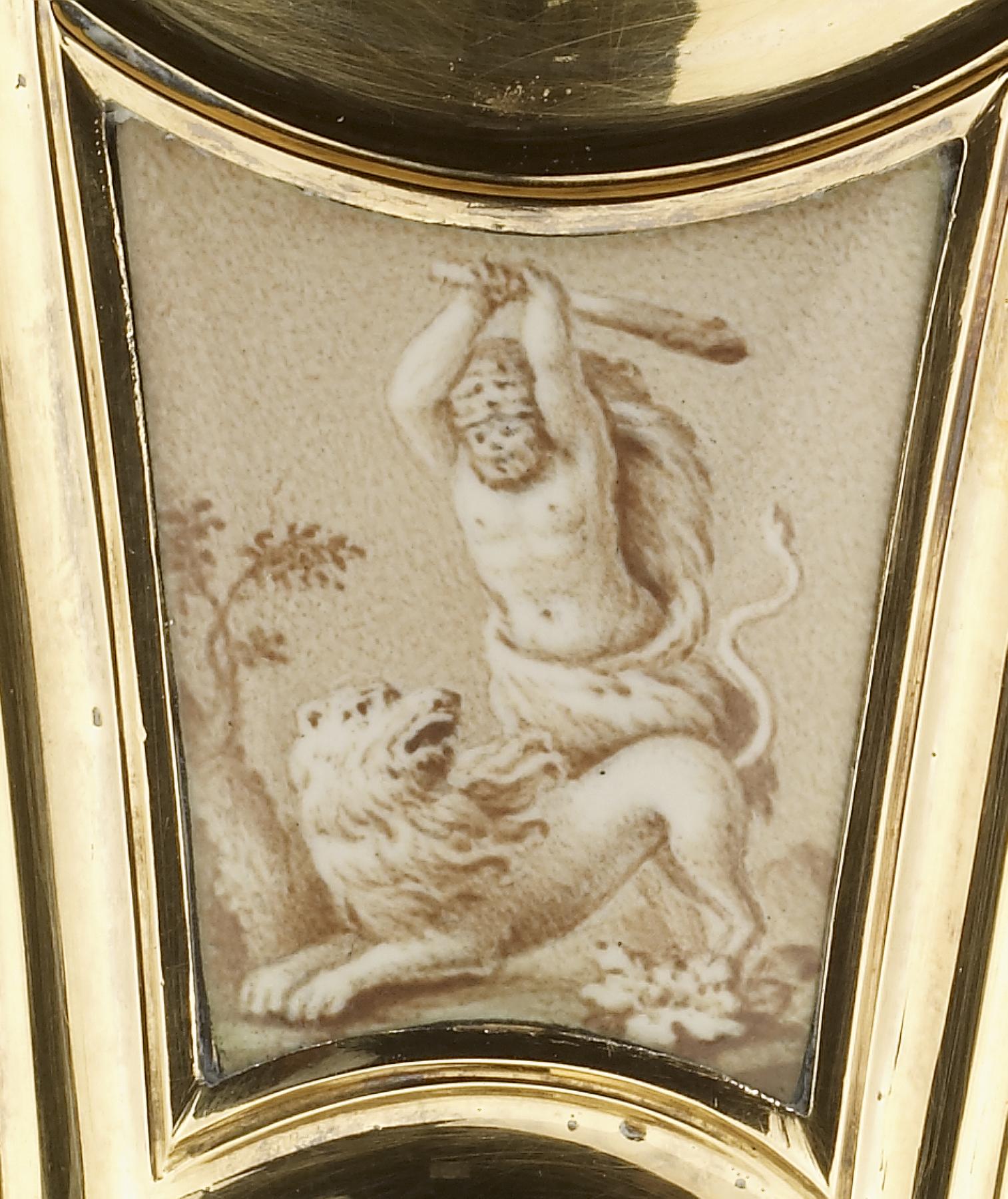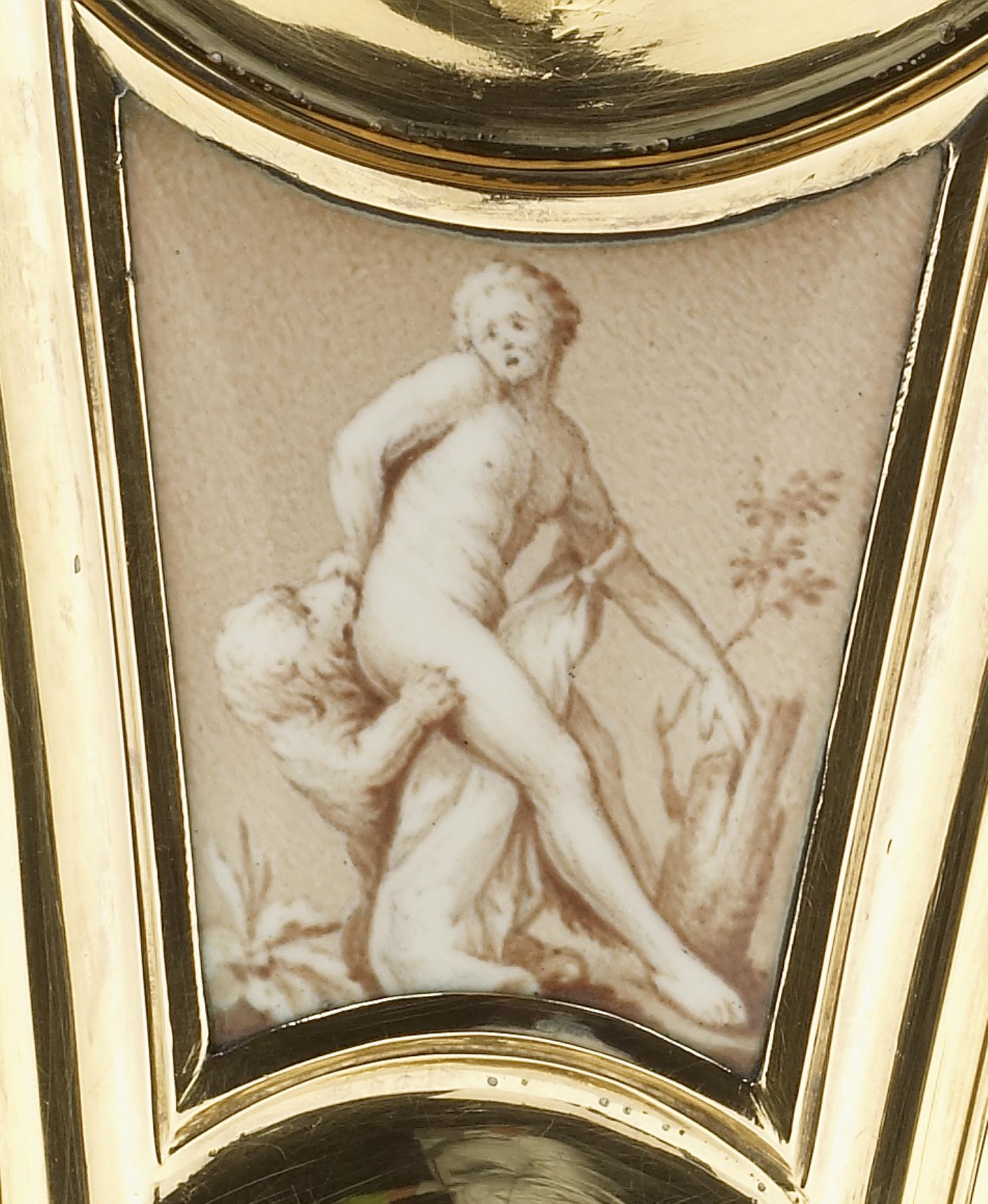Potpourri Vase with Classical Figures
(18th and 19th Centuries )
It is believed that Catherine the Great gave this gold vase to her lover, Count Grigorii Grigorevich Orlov. Together with his brothers, the count organized a coup that placed Catherine on the Russian throne in 1762. The two putti on the lid support a shield bearing the count's monogram. Oval medallions have been painted with scenes of Flora, personifying spring, and Ceres, summer. Represented on the panels beneath the handles are Milon of Croton, a famous Greek athlete of the 6th century BC, and Hercules killing the Nemean lion.
The Cyrillic initials on the bottom of the vase designate St. Petersburg's assayer Ivan Frolov (1738-1779). The phonetic value of the two letters corresponds to "I F" in English.
The vase demonstrates the 18th-century goldsmith's mastery of the techniques of casting, chasing, and chiseling. Gold in different colors and in both matte and burnished finishes has been used.
Jean Pierre Ador was born near Geneva and baptised on 25 July 1724. This vase has been called his masterpiece. Many French artists worked on commission for Catherine the Great, and many relocated to Saint Petersburg at this time, the best known being Etienne Maurice Falconet. Catherine's reading of Voltaire while still Grand Duchess seems to have created a life long interest in all things French.
Inscription
Provenance
Provenance (from the French provenir, 'to come from/forth') is the chronology of the ownership, custody, or location of a historical object. Learn more about provenance at the Walters.
Grigory Grigorievich Orlov (1734-1783), St. Petersburg, 1768, by commission, or Catherine the Great (1729-1796), St. Petersburg, 1768, by commission; Grigory Grigorievich Orlov, St. Petersburg [date of acquisition unknown], by gift; Orlov-Davidoff Collection [date and mode of acquisition unknown]; Henry Walters, Baltimore [date and mode of acquisition unknown]; Walters Art Museum, 1931, by bequest.
Exhibitions
| 2017-2018 | Fabergé and the Russian Crafts Tradition: An Empire's Legacy . The Walters Art Museum, Baltimore. |
| 2014-2016 | From Rye to Raphael: The Walters Story. The Walters Art Museum, Baltimore. |
| 2013-2014 | Exuberance of Meaning: The Art Patronage of Catherine the Great. Georgia Museum of Art, Athens; Hillwood Estate, Museum & Gardens, Washington. |
| 1996-1997 | Russian Enamels. The Walters Art Gallery, Baltimore. |
| 1959-1960 | Russian Art: Icons and Decorative Arts from the Origin to the Twentieth Century. The Walters Art Gallery, Baltimore. |
| 1904 | Istoricheskaia vystavka predmetov iskusstva. |
Conservation
| Date | Description | Narrative |
|---|---|---|
| Treatment | Cleaned; loss compensation | |
| Treatment | The potpourri vase was cleaned before loan. Local areas of tarnish or oxidation were polished using precipitated chalk in a water:ethanol slurry. Minor losses in the blue basse taille enamel border on the lid were re-inpainted using an acrylic dispersion. | |
| 1/22/2013 | Examination | Examined for treatment |
Geographies
Russia, Saint Petersburg (Place of Origin)
Measurements
H: 10 15/16 x W: 5 7/8 x D: 4 5/8 in. (27.8 x 14.9 x 11.7 cm); Lid H: 4 3/16 x W: 4 3/8 x D: 4 7/16 in. (10.6 x 11.1 x 11.2 cm); Base H: 7 5/16 x W: 5 7/8 x D: 4 5/8 in. (18.6 x 14.9 x 11.7 cm)
Credit Line
Acquired by Henry Walters
Location in Museum
Not on view
Accession Number
In libraries, galleries, museums, and archives, an accession number is a unique identifier assigned to each object in the collection.
In libraries, galleries, museums, and archives, an accession number is a unique identifier assigned to each object in the collection.
57.864


